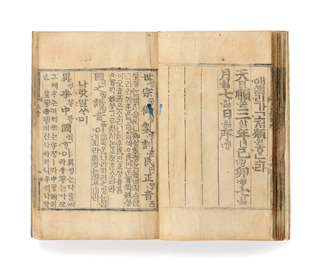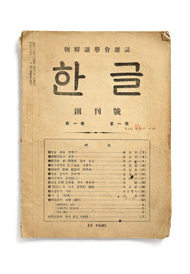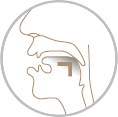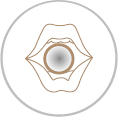Museum Overview
About Hangeul
Home > Museum Overview > About Hangeul
Hangeul
When did “Hunminjeongeum” start to be called “Hangeul”? Although there might be some disputes about this matter, it is assumed that the name “Hangeul” began to be used since the beginning of 1910s according to records.After Hunminjeongeum was created, it was called in various names such as “jeongeum,” “eonmun,” “banjeol,” etc. Since the Gabo Reform of 1894, Hunminjeongeum was commonly called as “gukmun” or “gukseo.” The name “Hangeul” can be found in the book <Hangeulmo Jukbogi> published by an academic research group, Baedalmal Geulmoeum and children’s magazines such as Aideulboi, etc. Later, in 1927 Joseon Language Society published their research journal “Hangeul.” Furthermore, in 1928 as the name of the public holiday to celebrate the creation of Hunminjeongeum was changed from “gagyanal” to “Hangeulnal,” the name “Hangeul” began to be widely used.
-

▲ Worinseokbo
A representative Buddist book translated and written in Hangeul in the early period of eonhae business. It contains the eonhae version (or Korean-translated version written in Hangeul) of the preface of <Hunminjeongeum Haeryebon>. -

▲ <Hangeul> First Issue
The first issue published by Joseon Language Society
Principle of Hangeul
Made to mimic the shape
Hunminjeongeum consists of twenty eight letters, which include five basic consonants and three basic vowels. Among these letters, the five basic consonants are based on the shapes of their vocal organs. The three basic vowels reflect the idea of sky, earth and human.A consonant is often called “datsori.” “Datsori” signifies the sound made when breath that comes out from the throat touches a vocal organ. There are five spots where datsori is produced: molars, tongue, lips, teeth and throat. The five basic consonants that reflect the shapes of those spots or organs include “ㄱ,” “ㄴ,” “ㅁ,” “ㅅ” and “ㅇ.” The consonant “ㄱ,” which is a velar sound, reflects the shape of the tongue covering the throat. The consonant “ㄴ,” which belongs to the lingual sound, is based on the shape when the tongue touches the upper gums. The consonant “ㅁ,” which is a labial sound, reflects the shape of the mouth or lips. Finally, the consonant “ㅇ,” which makes a guttural sound, is based on the shape of the throat. Like this, datsori (consonant) is the fruit of scientific research, produced after the careful examination and analysis of vocal organs and their movements.
A vowel is often called “holsori.” “Holsori” signifies the sound made when breath comes out from the throat but does not touch vocal organs. Those vowels embody and visualize the idea of sky, earth and human. Sky implies a positive force like sun. Earth indicates a negative force like moon. Human represents a neutral force.
-

▲ Making basic consonants
-

▲ Making basic vowels
Adding strokes and combining
Among the twenty eight letters that constitute Hunminjeongeum, there are only five basic consonants (ㄱ, ㄴ, ㅁ, ㅅ and ㅇ) and three basic vowels (ㆍ, ㅡ, and ㅣ). However, these basic consonants and vowels can be expanded by adding strokes or combining together in order to make a variety of characters. The basic consonants are soft sounds. When those consonants are pronounced with more breath, they make harsher sounds. To indicate the harsher sounds, strokes are added to the basic consonants. In this way, nine consonants are created additionally. Besides, there are three more consonants (ㆁ,ㄹ and △), summing up to seventeen consonants in total.The basic vowels can be combined together to produce a variety of vowels. The basic vowels (ㆍ, ㅡ, and ㅣ) are combined once and generate four new vowels— · ㅡ, ㅣ·,· ㅡ and ㆎ (ㅗ, ㅏ, ㅜ and ㅓ). “ㅗ” and “ㅜ” are created by adding “ㆍ” to the top and bottom of “ㅡ”. When “ㆍ” is added to the outside and inside of “ㅣ,” “ㅣ·(ㅏ)” and “ㆎ(ㅓ)” are constructed. Other vowels— ㅛ, ㅑ, ㅠ and ㅕ—are formed when “ㆍ” is added to basic vowels twice. According to this natural law, the positive vowels are created when the dot “ㆍ” is attached to the top or right side of a basic vowel. On the other hand, the negative vowels are formed when the dot “ㆍ” is attached to the bottom or left side of a basic vowel.
Since Hangeul consists of the basic characters with the minimum number of letters and can be expanded following regular patterns or rules, it is easy to learn and efficient to use. Furthermore, this scientific aspect of Hangeul is highlighted through the fact that it is closely connected with the natural philosophy: particularly for vowels, they embody the idea of three harmonies, which emphasizes balance between sky (positive force or yang), earth (negative force or yin) and human (neutral force). This idea represents the cosmology and linguistic philosophy behind the creation of Hangeul.
-

▲ Velar sound
-

▲ Lingual sound
-

▲ Labial sound
-

▲ Dental sound
-

▲ Guttural sound
Hunminjeongeum
“Hunminjeongeum” is the original name of Hangeul. There is the first record about Hunminjeongeum in the book Sejong Shilok, which was documented in the twelfth month of the lunar calendar in 1443: “This month the King created the twenty eight letters of the written language of Joseon…This is called “Hunminjeongeum.””“Hunminjeongeum” also refers to the name of a book, which was published in 1446 to record the circumstance of the period when Hunminjeongeum was created and to document its invention principle, academic backgrounds, etc. The book is commonly called <Hunminjeongeum> (more specifically <Hunminjeongeum Haeryebon>). The book <Hunminjeongeum> consists of the preface written by King Sejong the Great to announce the purpose of inventing the written language of Joseon; the second part “yeui” to explain the sound of each character and the operation principle; the third part “haerye” to show the principle of inventing the consonants and vowels and the idea of the initial, middle and final sound of a syllable; and finally the postface by Jeong In-ji to confirm the creator and the excellence of the written language. Because of this book Hunminjeongeum, today we can recognize the purpose and principle of creating Hangeul and specifically understand its pronunciation rules and usage.
<Hunminjeongeum>, the national treasure no. 70 of Korea, was listed in UNESCO’s Memory of the World Register in October1997 for its highly acclaimed linguistic, cultural and ideological values. Now, <Hunminjeongeum> is preserved in Gansong Museum.
Some portions of <Humninjeongeum> are translated and written in Korean. The translation version of the book is called <Hunminjeongeum Eonhaebon>. The book is well-known for its very famous starting line— “나랏말ᄊᆞ미 中國에 달아……” —which can be translated as “because the speech of this country is different from that of China…”


















